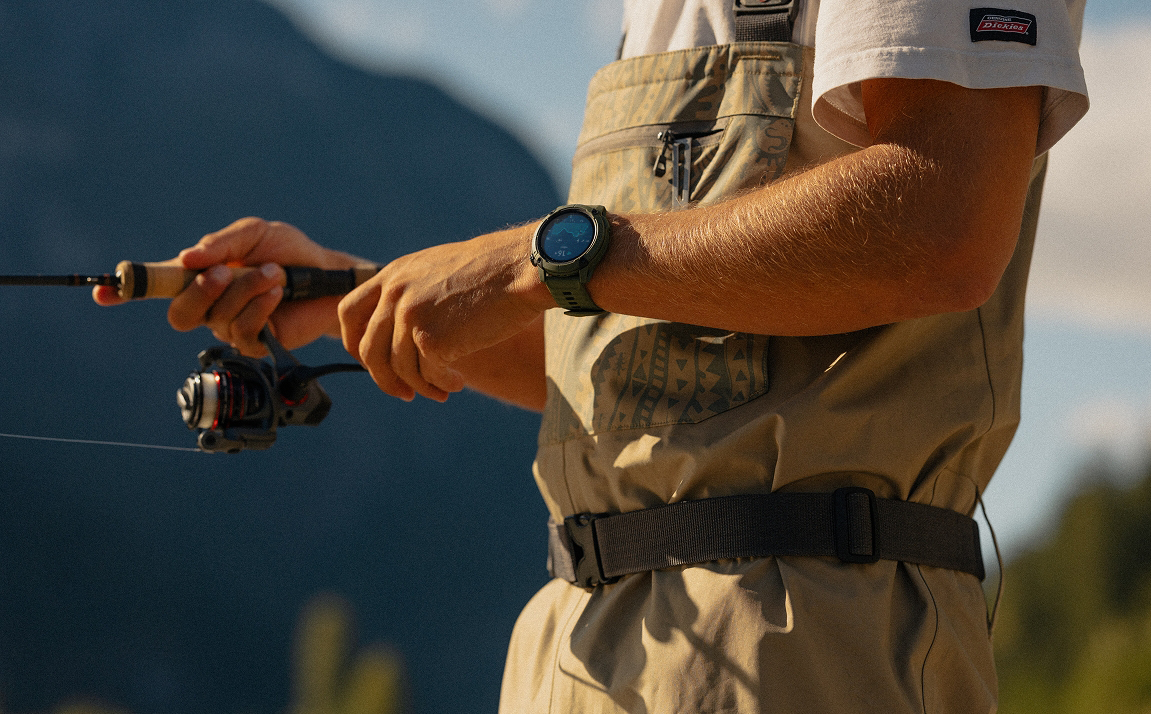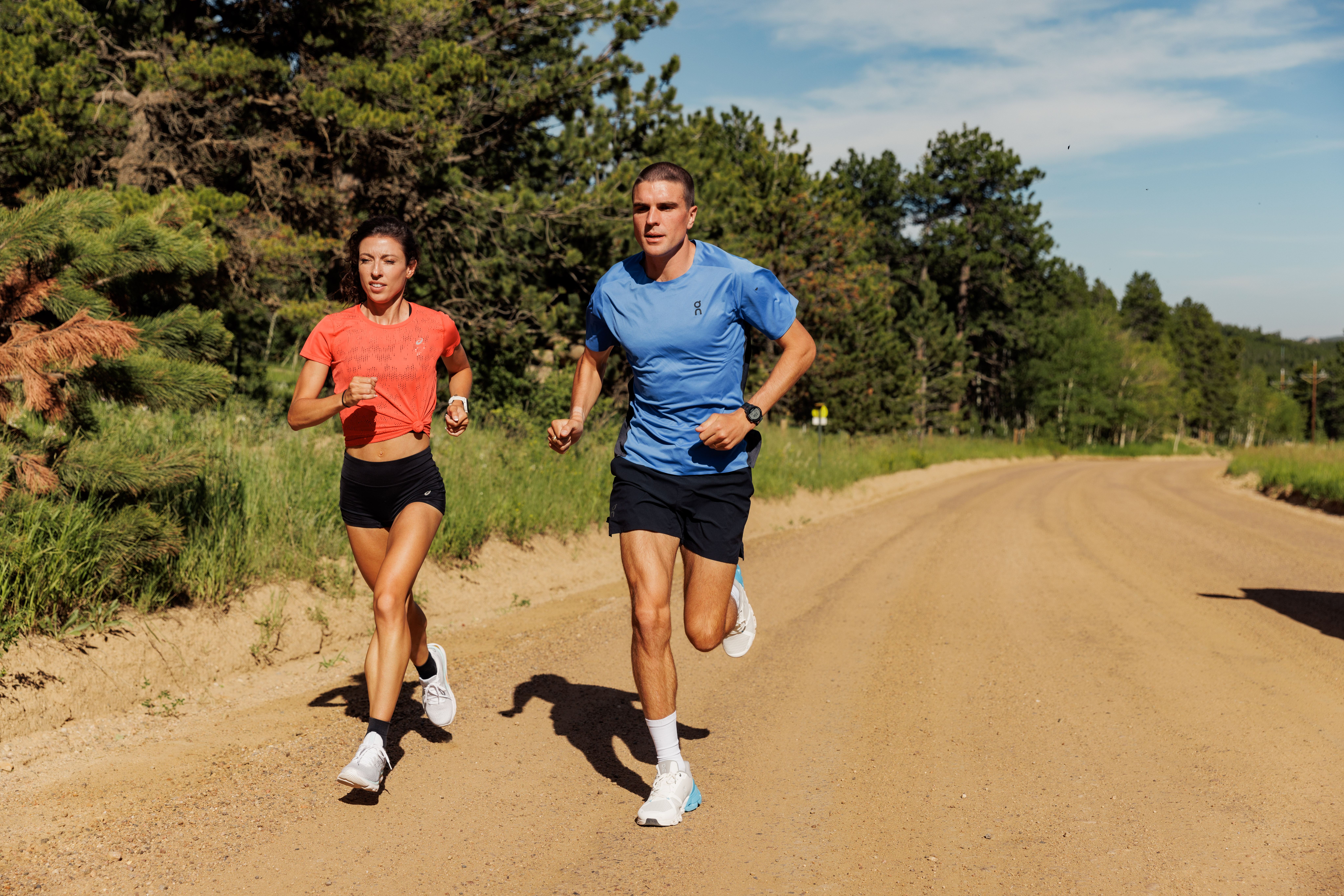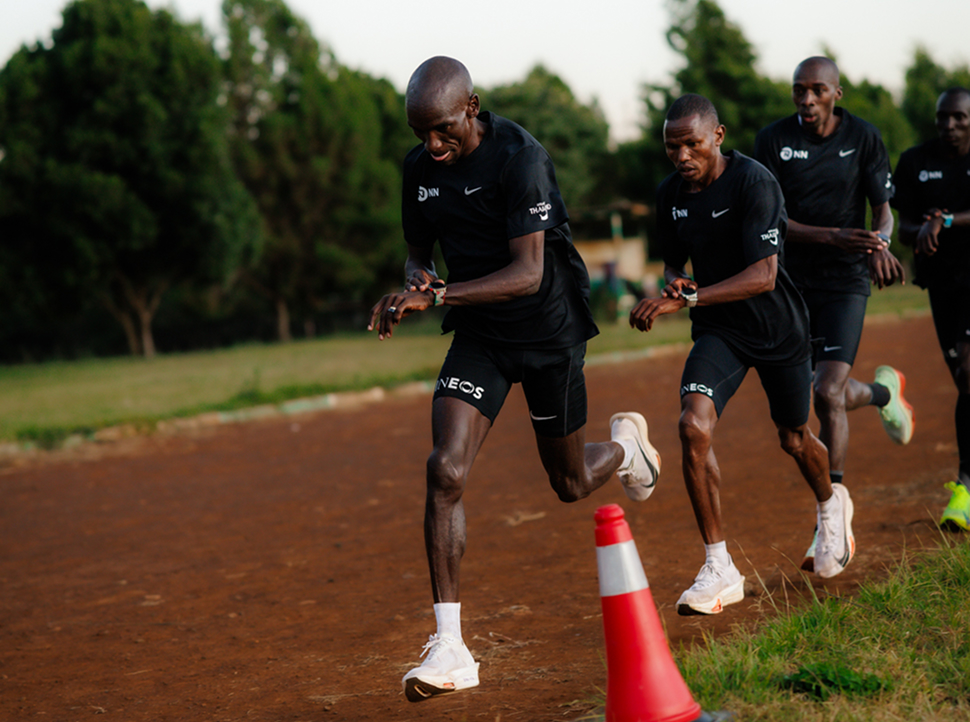If you are currently training for a fall race, you are more than likely running through the oppressive heat. Runs may result in feeling frustrated and goal paces unreachable. As part of our new COROS Coaches service, we received a few questions regarding how to adapt training to the summer heat and humidity. Below you will find our coaching insights on the matter and various ways to monitor it through EvoLab!
What Happens To Your Body Running In The Heat and Humidity?
Running in hot and humid conditions can pose several challenges to the body's ability to regulate core temperature and negatively impact your running performance.
- Increased Sweat Production: Running raises the body's core temperature, and to cool down, it produces sweat. In hot and humid weather, sweat evaporation reduces, causing excessive sweating, dehydration, impaired performance, cramps, and heat illnesses.
- Increased Heart Rate: Your heart rate tends to increase to support the cooling process and maintain blood flow to the skin for sweating. It can be challenging to sustain high-intensity exercise when your heart is working harder in the heat, which can cause fatigue to set in more quickly.
- Dehydration: Your body loses more fluids with increased sweat production and reduced evaporation. Replace these lost fluids with water or electrolyte-rich beverages to avoid the risk of becoming dehydrated.
Instead of pushing to hit similar paces that you would in cooler conditions, it is important to listen to your body and focus training more on perceived effort.
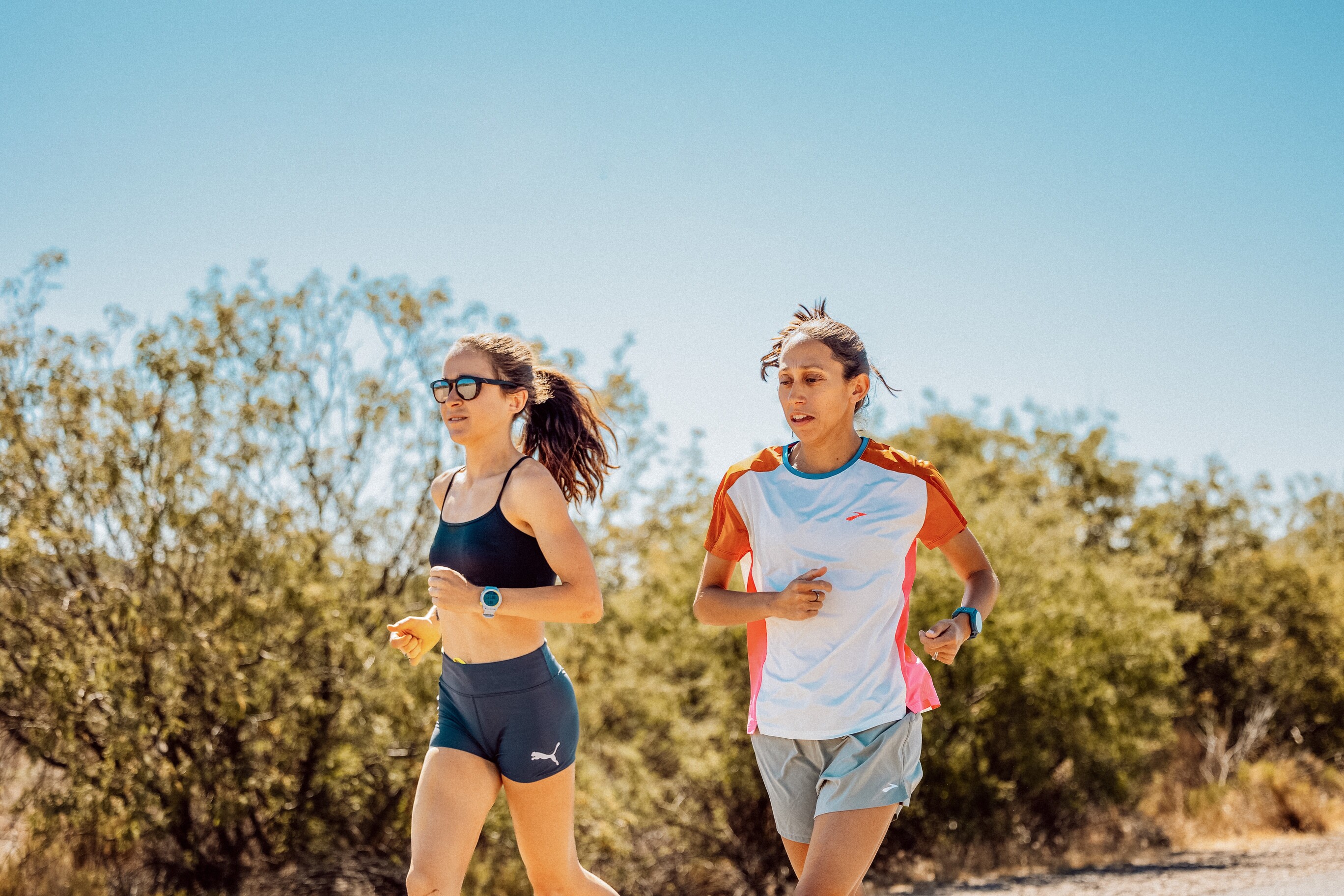
Heat and Your Menstrual Cycle
Training in the summer heat and humidity is already challenging, but adding your menstrual cycle can make it feel even harder.
Menstruating runners will vary in symptoms and exact timelines of their menstrual cycle from month to month. The luteal phase occurs approximately 5-7 days before menstruation when many runners experience adverse side effects due to hormonal changes. During this phase, estrogen and progesterone levels rise, leading to an increase in core temperature, fatigue levels, heart rate, and premenstrual syndrome (PMS) symptoms.
The higher Progesterone levels can contribute to runners experiencing higher-than-normal core temperatures and heart rates, especially when training in the heat. This can put you at a higher risk of dehydration.
To reduce the impact of the menstrual cycle and summer heat on running performance, here are some helpful tips:
- Track Your Menstrual Cycle: Keeping a menstrual cycle log can help you anticipate the luteal phase and plan your training accordingly. (merge with down week)
- Plan a Down Week: consider incorporating a down week or reducing the intensity and volume of your training. This can help your body cope with hormonal changes and recover better.
- Focus on Effort-Based Training: Instead of solely relying on pace or distance, focus on effort-based training. Listen to your body, and decrease your training load (intensity and/or volume) based on how you feel during your menstrual cycle and in hot weather.
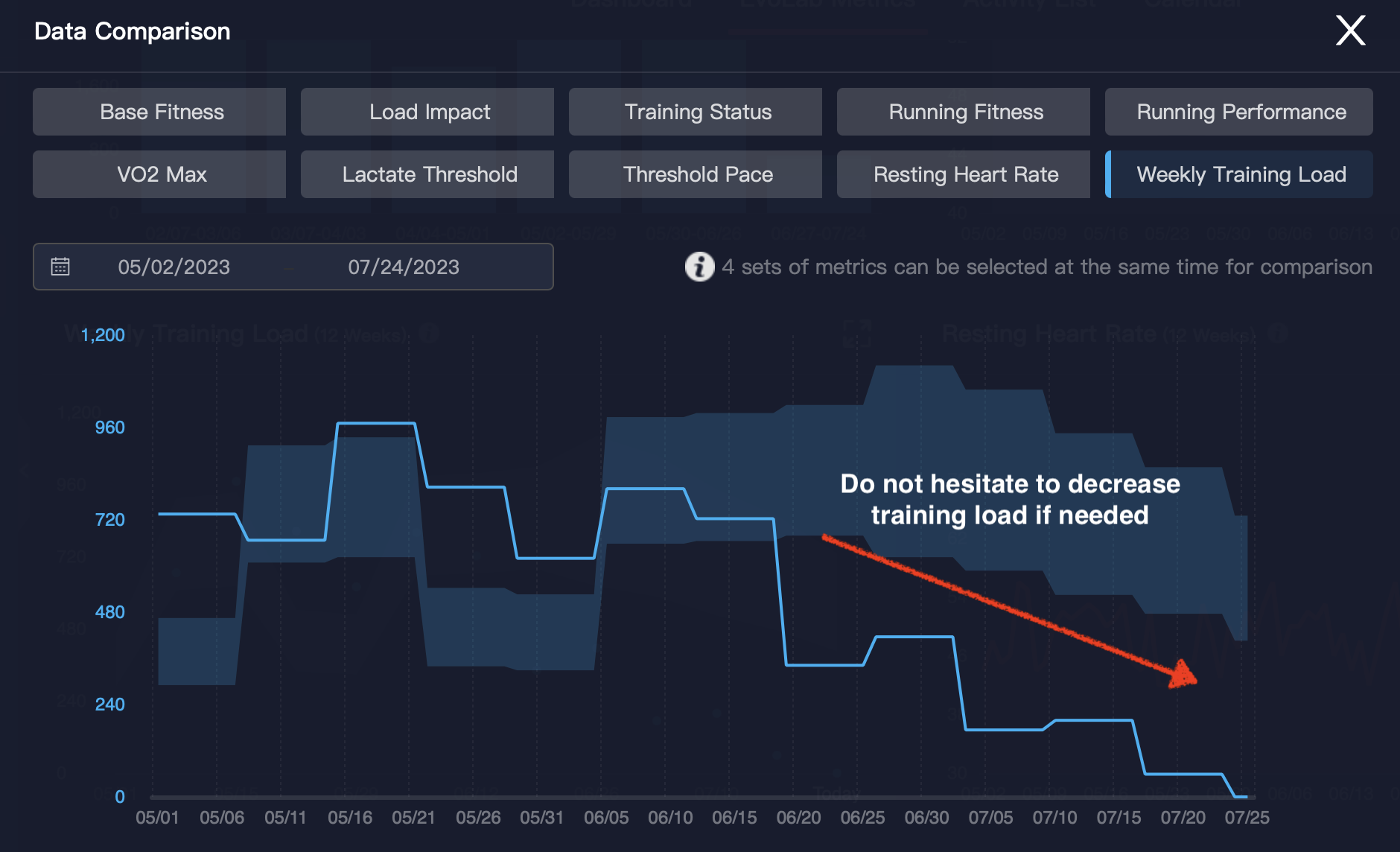
Remember that every individual's experience with the menstrual cycle and its impact on running can differ. By understanding your body and adjusting to your training routine, you can better manage the challenges posed by the combination of summer heat, humidity, and menstrual cycle.
How To Adapt Training To The Summer Heat And Humidity With COROS
Running Based On Effort Pace
Effort Pace considers external factors and how they can impact your strengths and weaknesses as a runner.

Effort Pace is based on your Threshold Pace Zones
COROS EvoLab learns how you have historically handled running uphill and downhill sections and customizes Effort Pace on your watch to your internal effort.
For example: If you are running an interval workout on the trails, your watch will consider your heart rate and pace to adjust to the appropriate Threshold Pace Zone.
If you want real-time data reflecting your effort, we suggest running with the COROS POD 2 on your shoe for rapid data collection. This will provide an even more accurate Effort Pace.
Training during the summer means that the temperature and humidity will influence your heart rate and pace. Using Effort Pace will help you to maintain a consistent effort throughout training, especially during those hot and humid training days.
The COROS sports science team will incorporate environmental factors into the Effort Pace algorithm in the future, including temperature, humidity, altitude, and more. Stay tuned as we continue to evolve and explore perfection.
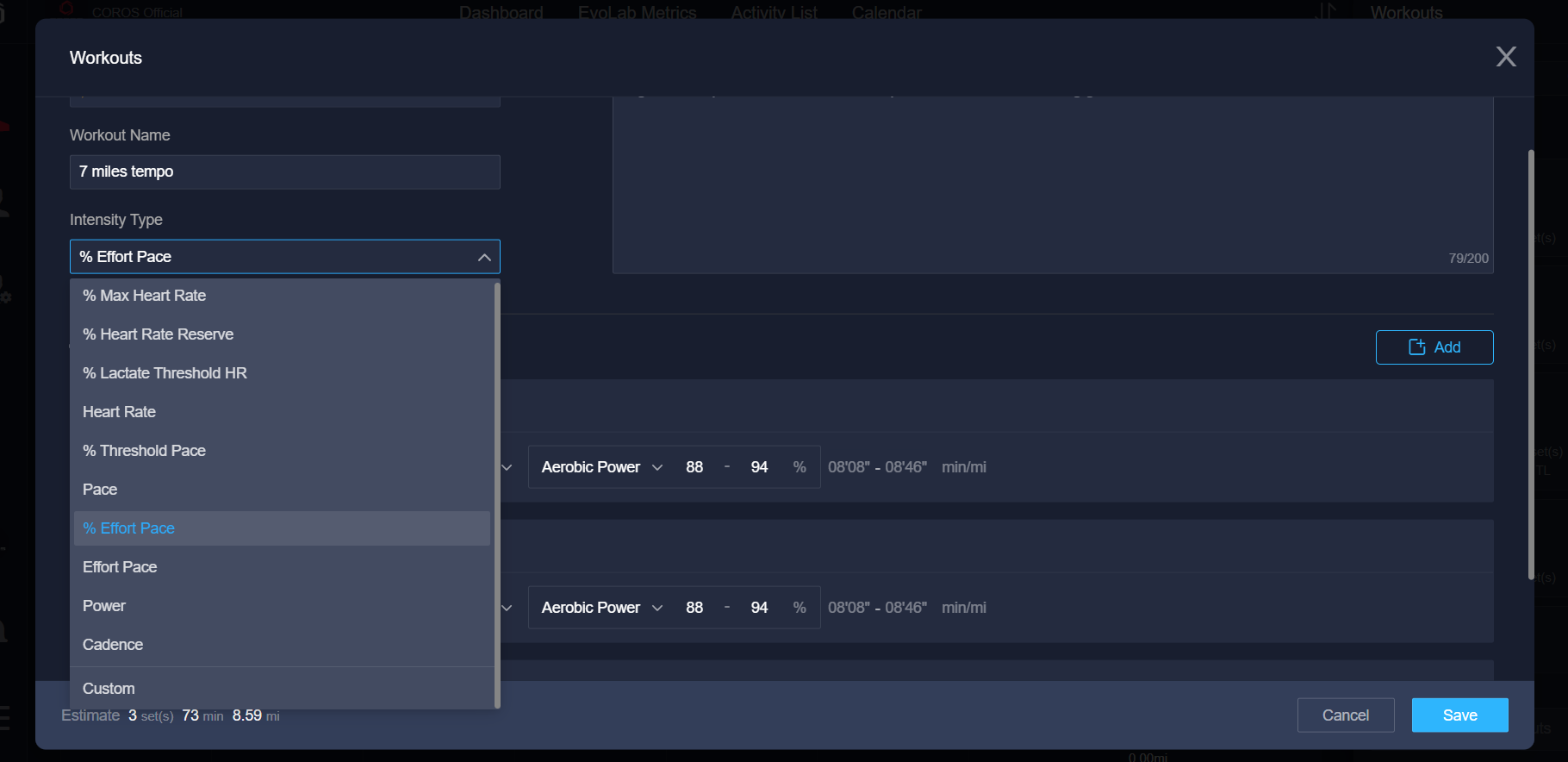
You can adjust a structured workout to a specific intensity or effort level to ensure your training plan is designed based on your abilities and goals. Simply select % Effort Pace as the intensity type and use it as a guide to control effort and run in the given zone. Your COROS watch will alert you if you are running too fast or slow.
If you are looking for specific Effort Pace workouts, check out the COROS Official workout library.
Monitoring Heart Rate During Summer Training
As the heat and humidity start to rise, so will your heart rate, making it difficult to use your typical Threshold Heart Rate Zones. When the temperature is between 75-90F degrees or higher, your heart rate may increase up to 10 bpm, and humidity may increase your heart rate even more.
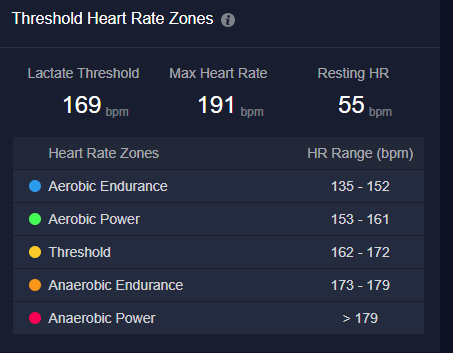
By being mindful of your body's response to hot and humid conditions, you can still maintain a safe and effective training plan during the summer months as you prepare for fall races.
If you are starting to feel the effects of heat-related illnesses, stop your workout immediately and get medical attention!
Your health and safety are the highest priority! Avoid running outside if the conditions are unsafe and unhealthy due to temperature and/or air quality. Check the forecast and move your scheduled workout to a cooler day, or run indoors on a treadmill!
/fit-in/0x18/coros-v2/images/common/logo_black.png)
